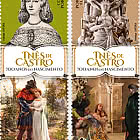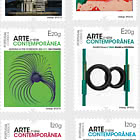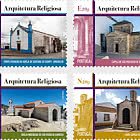Nations also have symbolic dates. In the case of Portugal, one of these dates is 1 July 1419. On that day, a work began to be written which, for that reason, would become known as the “Chronicle of Portugal of 1419”, or simply the “1419 Chronicle”. It was the rst time that a chronicle was written speci cally for Portugal. Before that, the history of the kingdom was conceived as part of the history of the Iberian Peninsula (or of Spain, as the whole of the Peninsula was called at the time), or was dedicated solely to the deeds of a given king, monastery or lineage.
This important innovation took place in a speci c historical context. At the end of the 14th century, the opposition of various sectors of the kingdom to a possible union with Castile gave rise to a revolutionary political process that led to the elevation to the throne of King John I, master of the Aviz order and illegitimate son of King Pedro. This was the beginning of the Aviz dynasty, which would reign during the 15th and 16th centuries, traditionally considered one of the most glorious periods in Portuguese history. As often happens in revolutionary periods, the victors tried to (re)write history, creating an image of rupture with the past. Though not without some irony, the chronicler Fernão Lopes summarised these changes by claiming that the seventh age of the world had begun with King John I. One of the main instigators of these ideas was King Duarte who, before becoming king (in 1438), signed documents as “We, the Prince”. It was precisely King Duarte who commissioned the writing of the 1419 Chronicle, including the self-recognition: “We, the Prince, made this chronicle.” It is highly probable that the material authorship of the Chronicle is indeed the work of Fernão Lopes, one of the most brilliant Portuguese writers of all time, and who would be named rst chief chronicler of the kingdom by King Duarte himself some years later.
The subject of the 1419 Chronicle covers a time period of just over 250 years, from the time of Count Henry (at the end of the 11th century) to the reign of King Afonso IV (1325-1357). More than a chronicle of the deeds of the kings of Portugal, it is a chronicle of all remarkable deeds that took place in Portugal, whether they were the direct responsibility of the monarchs or not. As was customary at the time, the chronicler made use of numerous narrative sources: chronicles, individual accounts, celebratory poems of certain events and so on. Almost all the pre-existing Portuguese historiographical material known today, written in vernacular or in Latin, and much of it lost forever, was used by him. However, revealing an uncommon methodology for the time, the chronicler also made use of numerous documentary sources: papal bulls, peace treaties and letters of various kinds. Indeed, the account of the reign of King Afonso IV is mostly constituted by a transcription or summary of letters exchanged between the kings of Portugal and Castile, popes and other gures. The chronicler does not limit himself to copying all these sources; on the contrary, he subjects them, explicitly or implicitly, to criticism, omissions, displacements, juxtapositions, rewriting or commentary as and when he pleases. “It is with great delight and care that we work to uncover the truth about each of the deeds contained in this book,” the author tells us at a certain point. Many famous episodes of Portuguese history are contained in the pages of this chronicle, some of which are presented in their oldest form known today: the conquest of the Algarve by the order of Santiago (Saint James of the Sword) and King Afonso III; the civil war between the supporters of King Sancho II, the deposed king, and King Afonso III; or the creation of the order of Christ, for example. Among them, there are also several legendary or semi-legendary episodes: the battle of Ourique; the adventures of the knight Fuas Roupinho, supposedly the rst Portuguese admiral; and the sieges of Coimbra and Celorico da Beira at the hands of the troops of King Afonso III are some such examples.
The fate of this work was somewhat enigmatic. Unlike other chronicles commissioned by the crown in the 15th century, the 1419 Chronicle was not lavishly copied with illuminations and on parchment of the highest quality. Even so, it was copied throughout the ages (2 full and 3 fragmentary copies exist) and was the main source of several later chronicles. As such, Portuguese understanding of the nation’s earliest beginnings was for many years based on the text of this chronicle. It is not surprising, therefore, that several historians, poets (Camões, of course!), playwrights, painters and artists have found inspiration in the Chronicle, directly or indirectly. It may even be said that, without this chronicle, our national mythology could be quite di erent today.











































